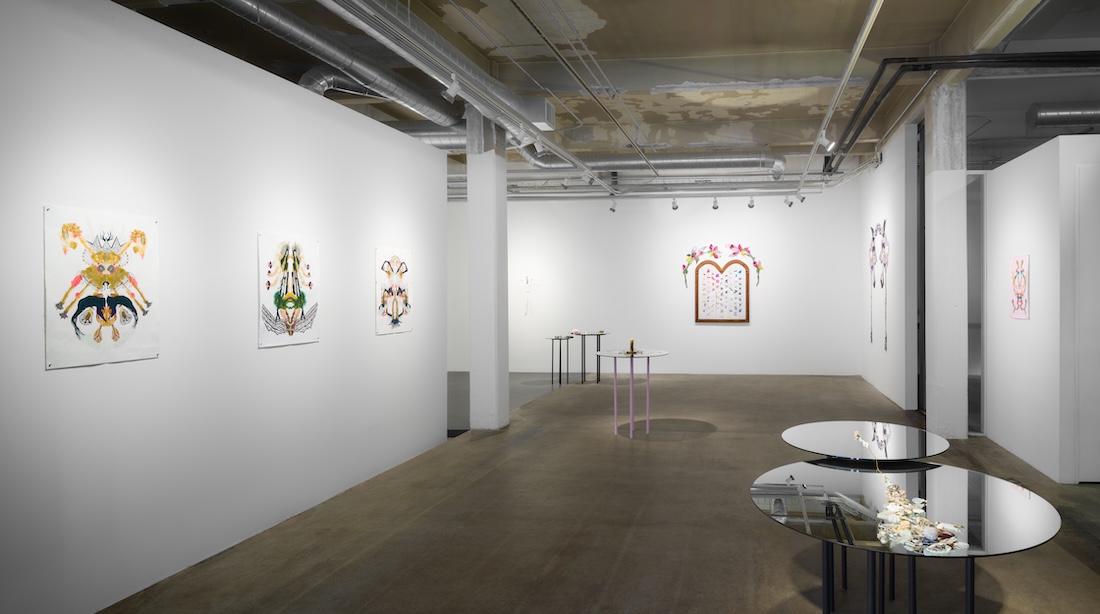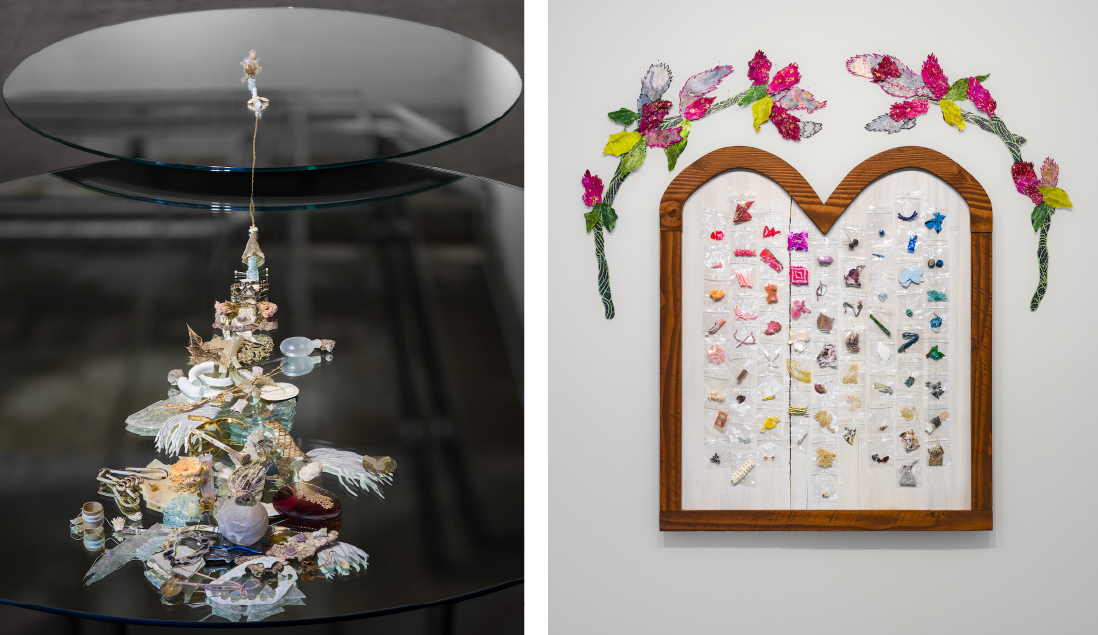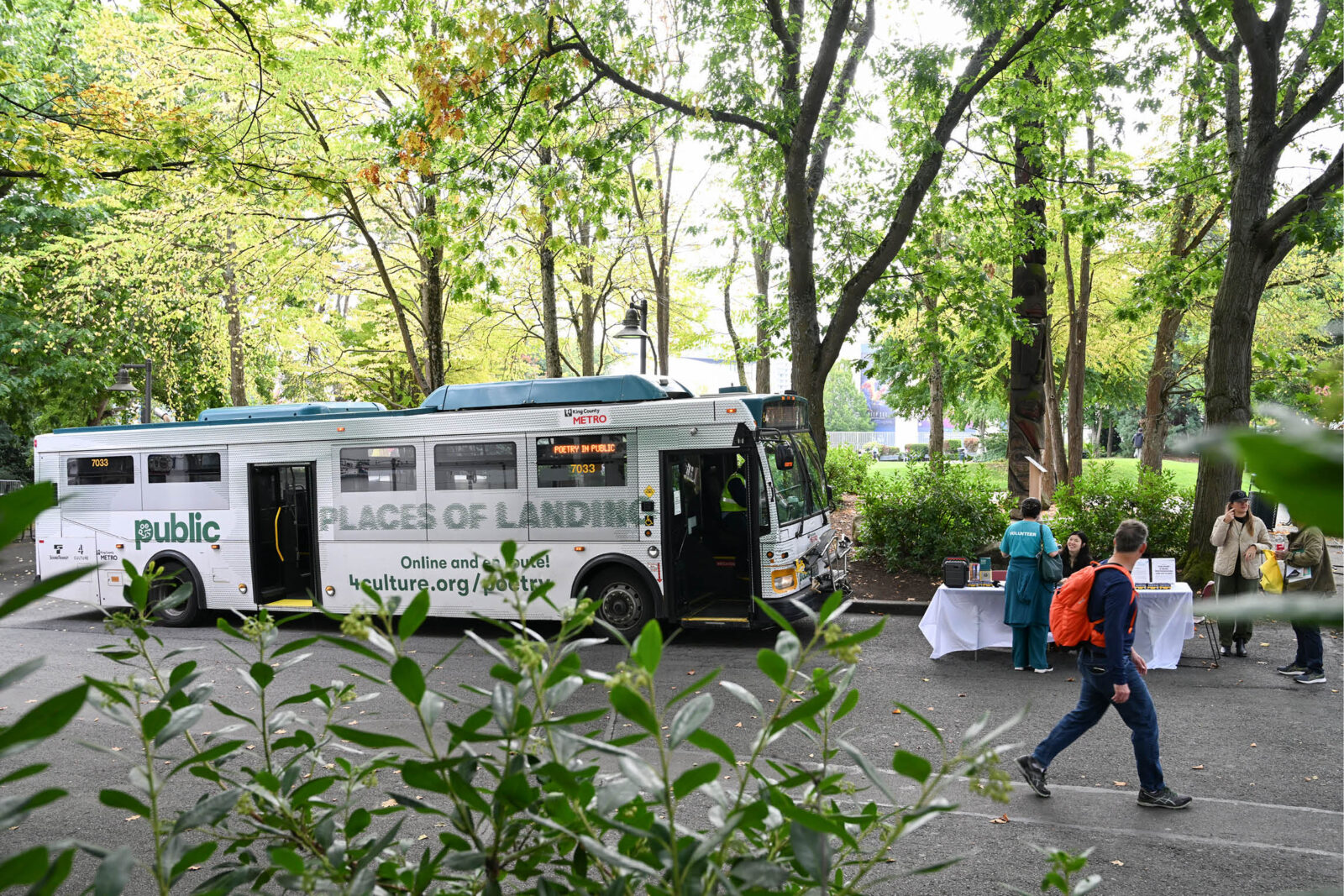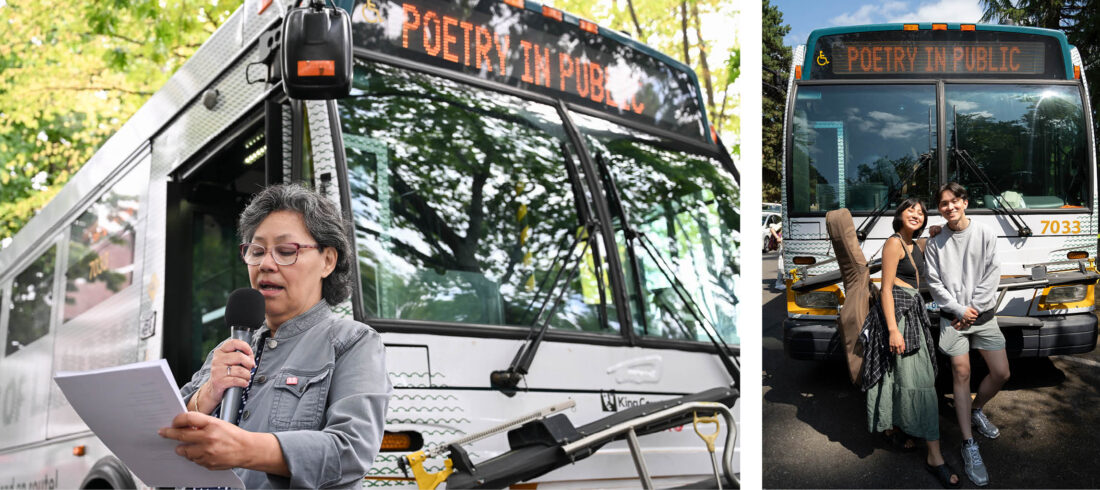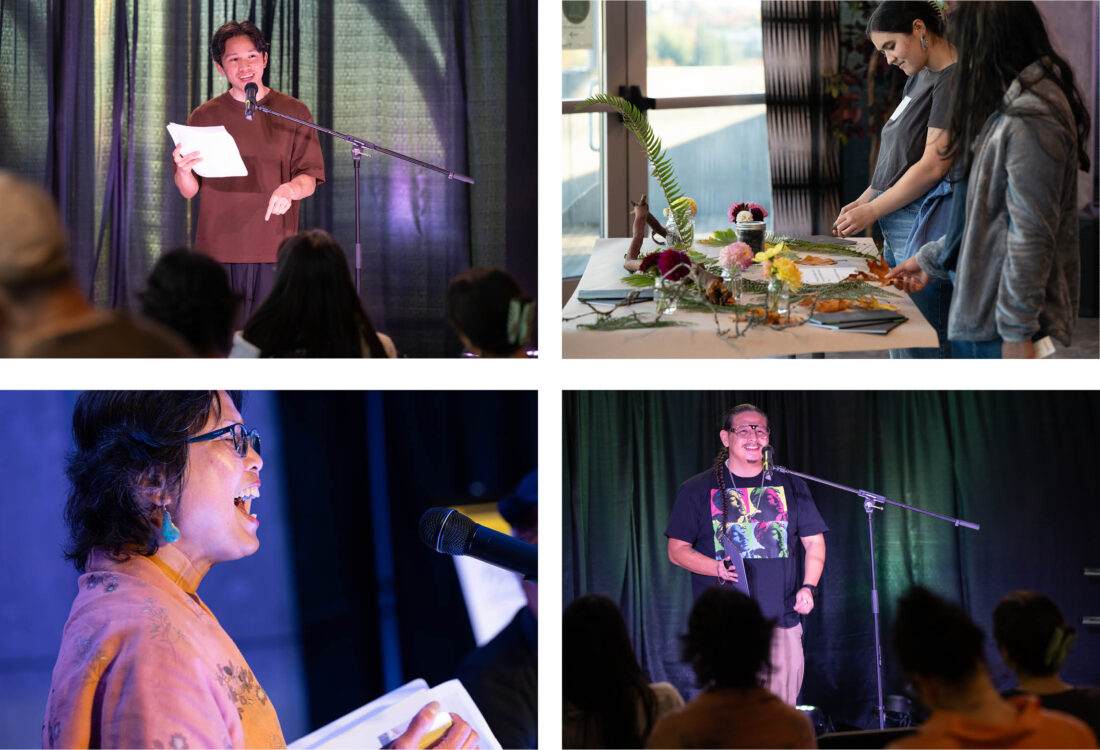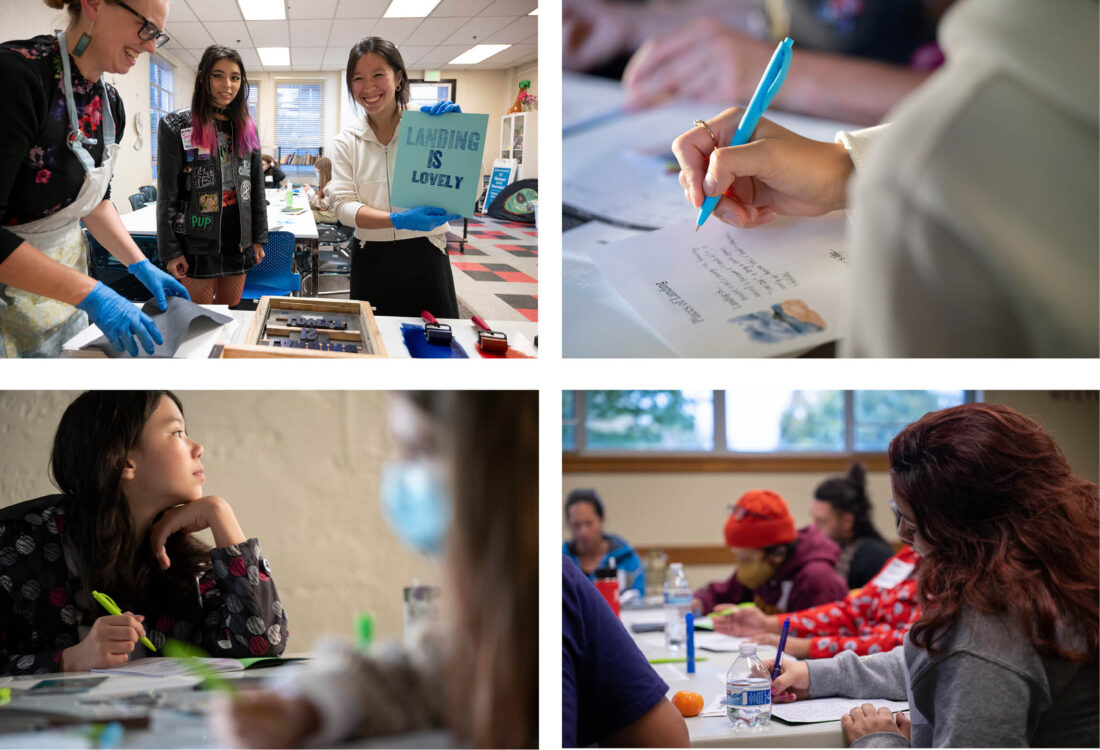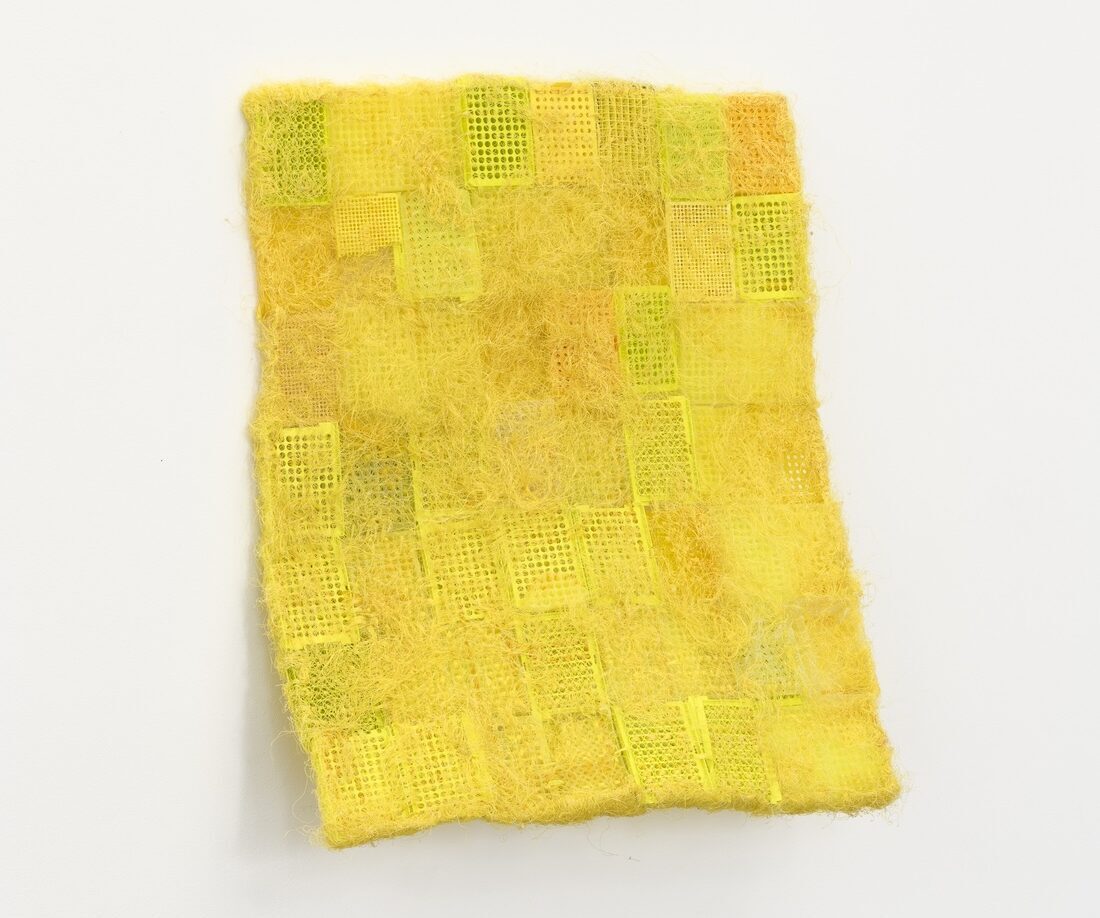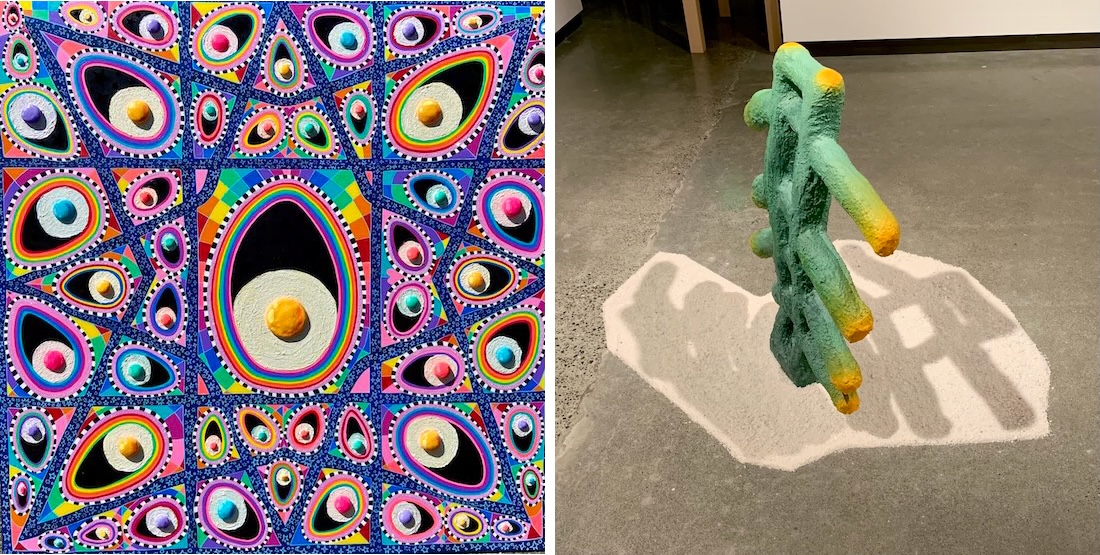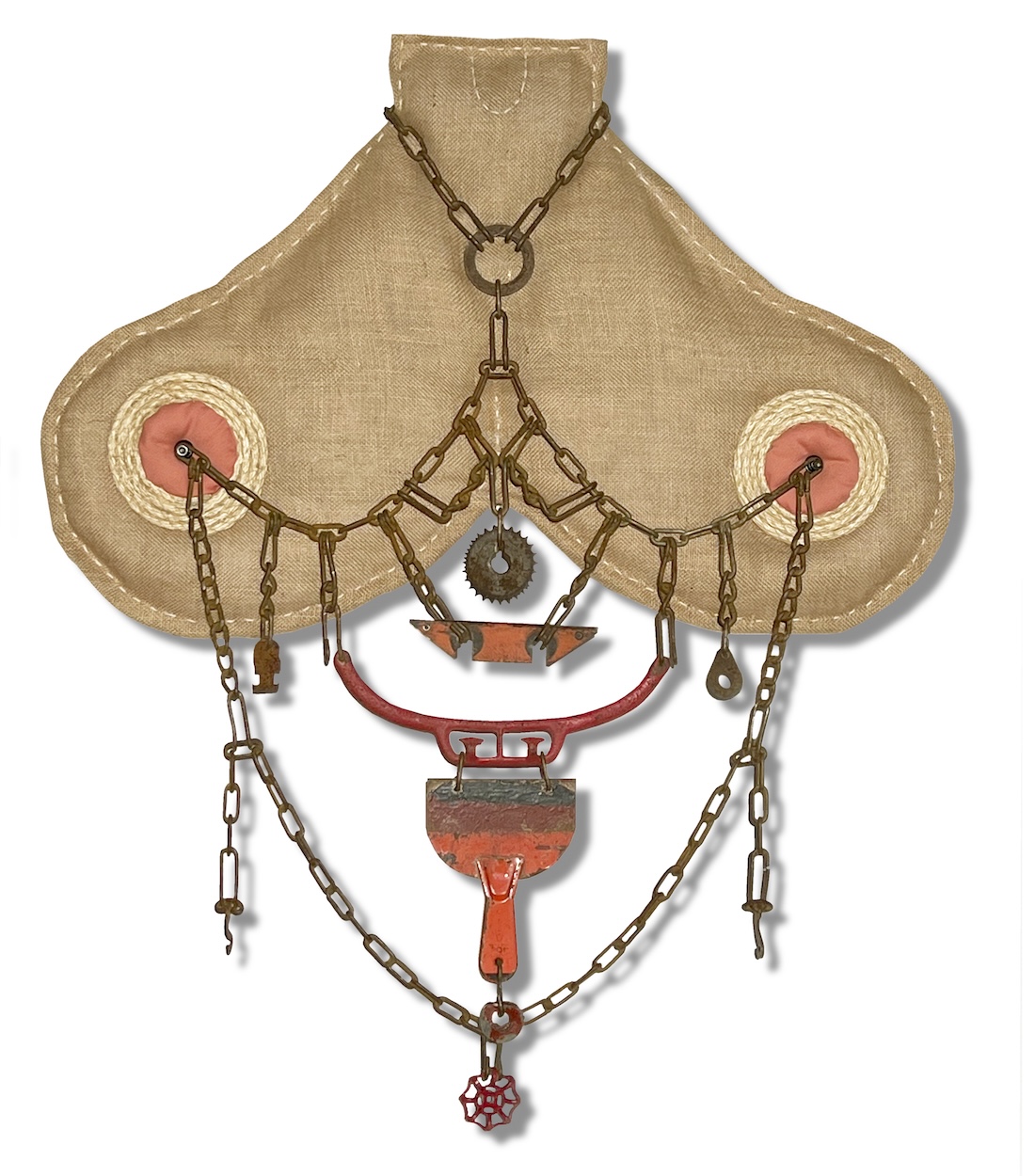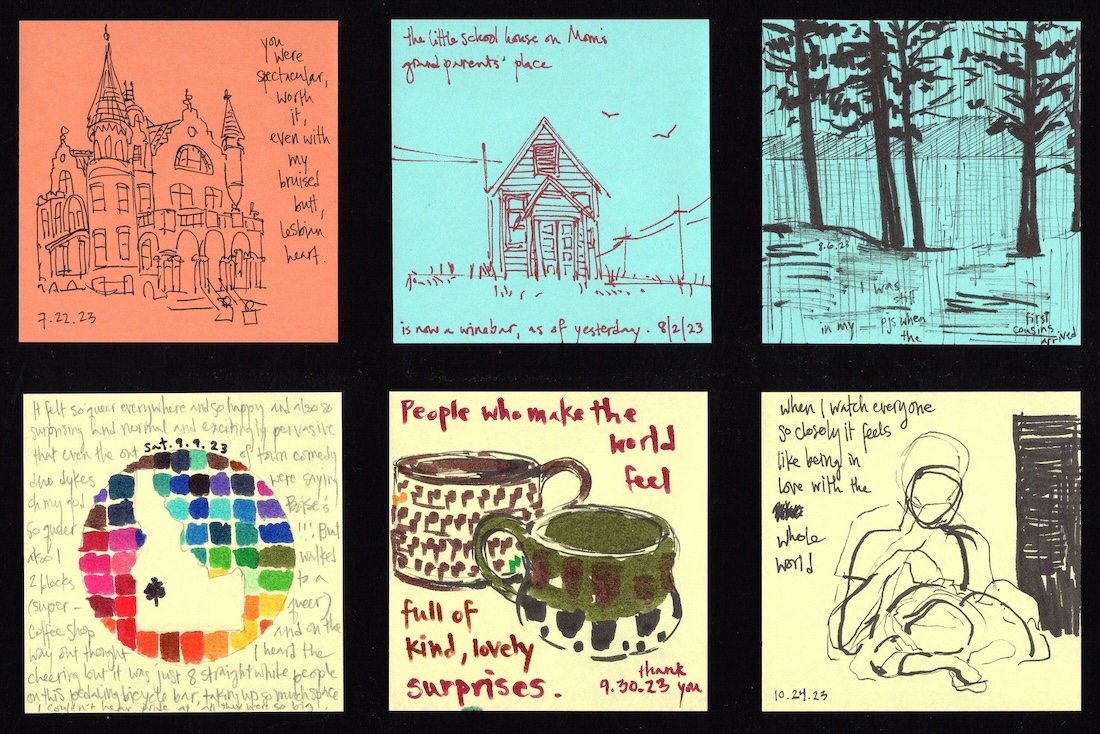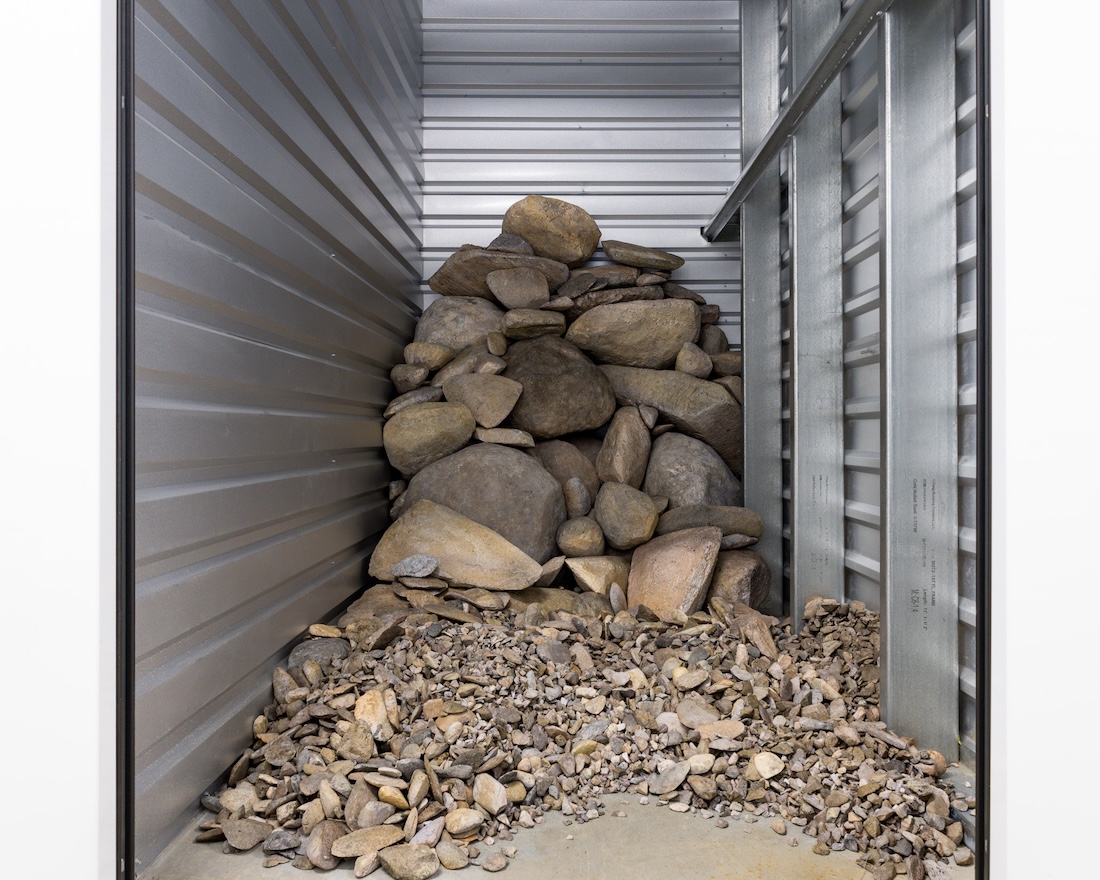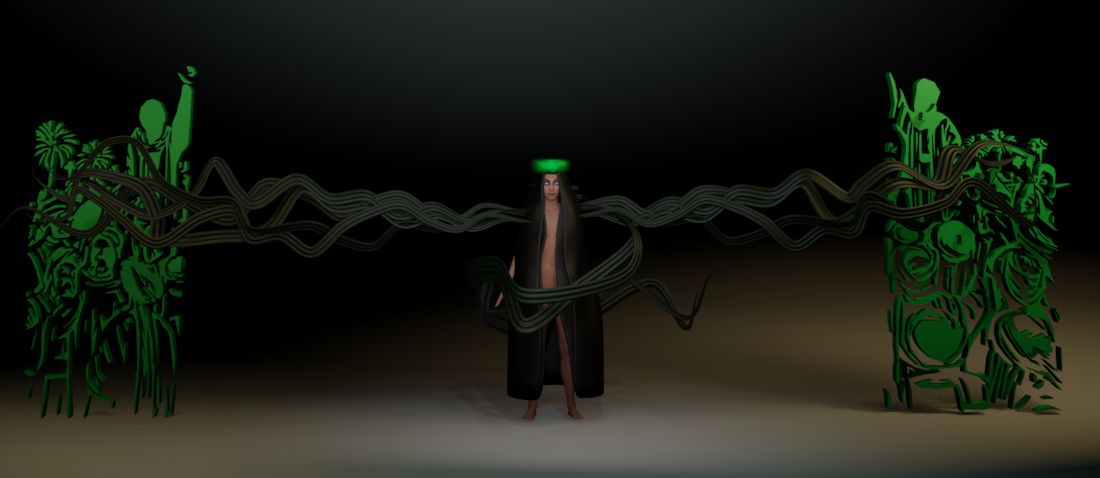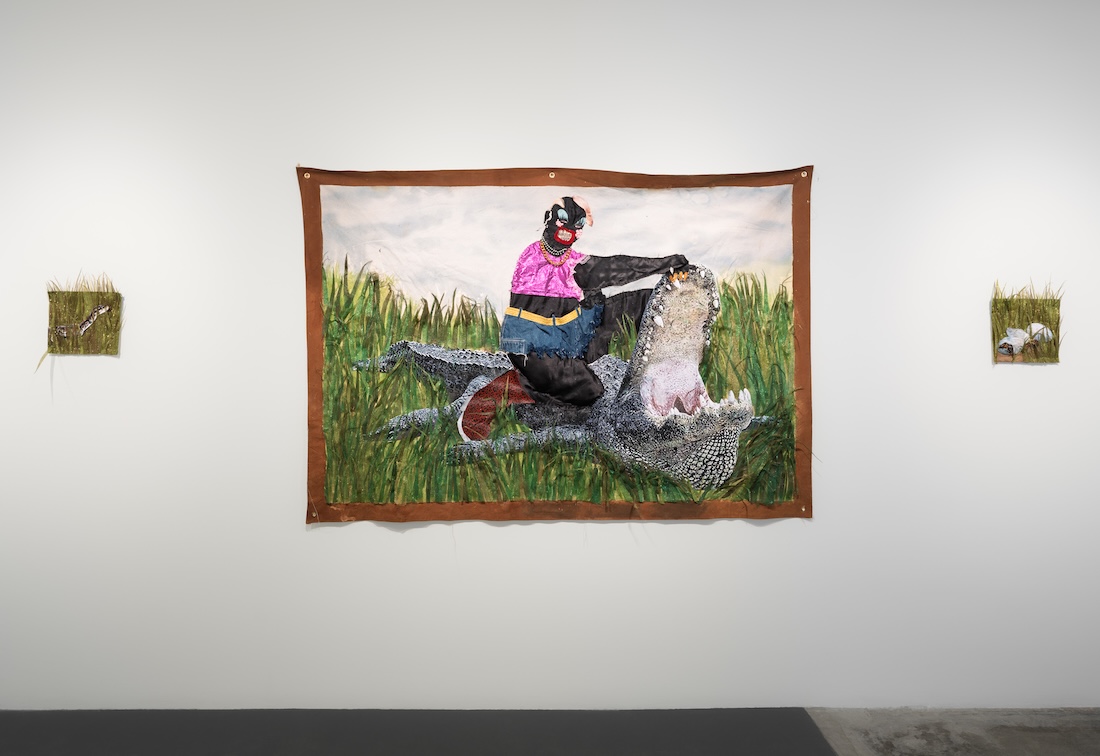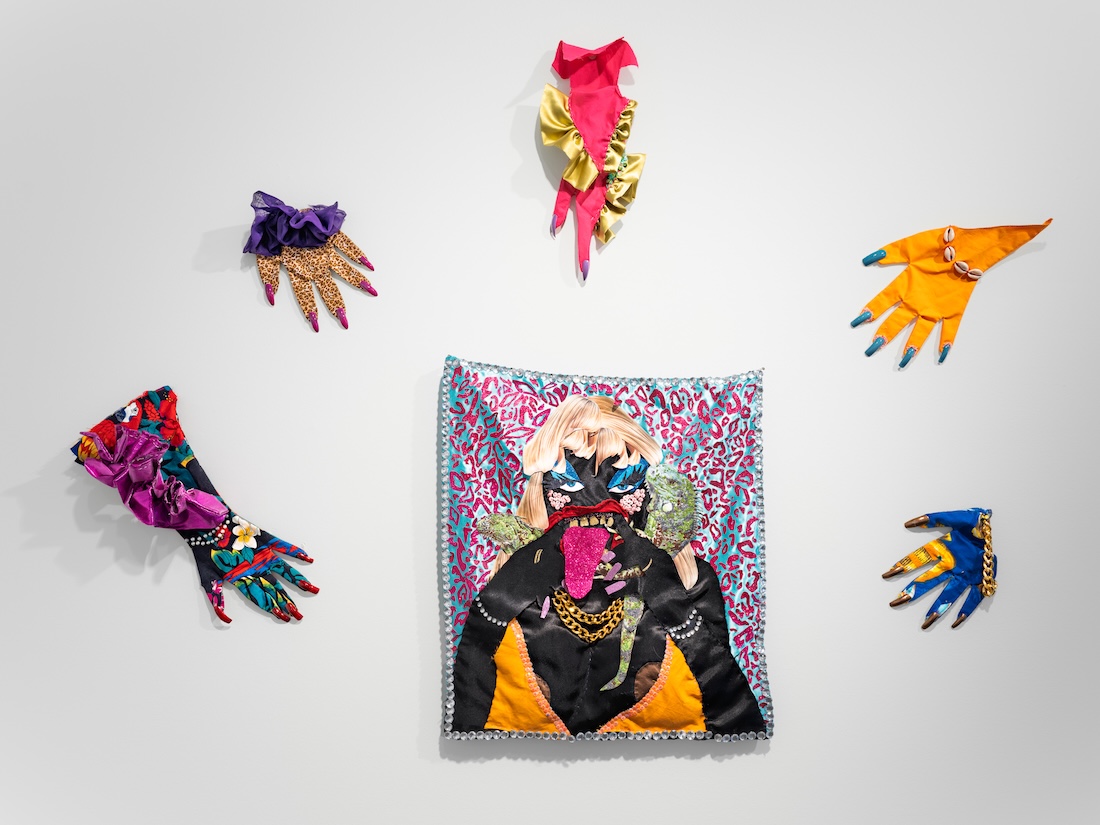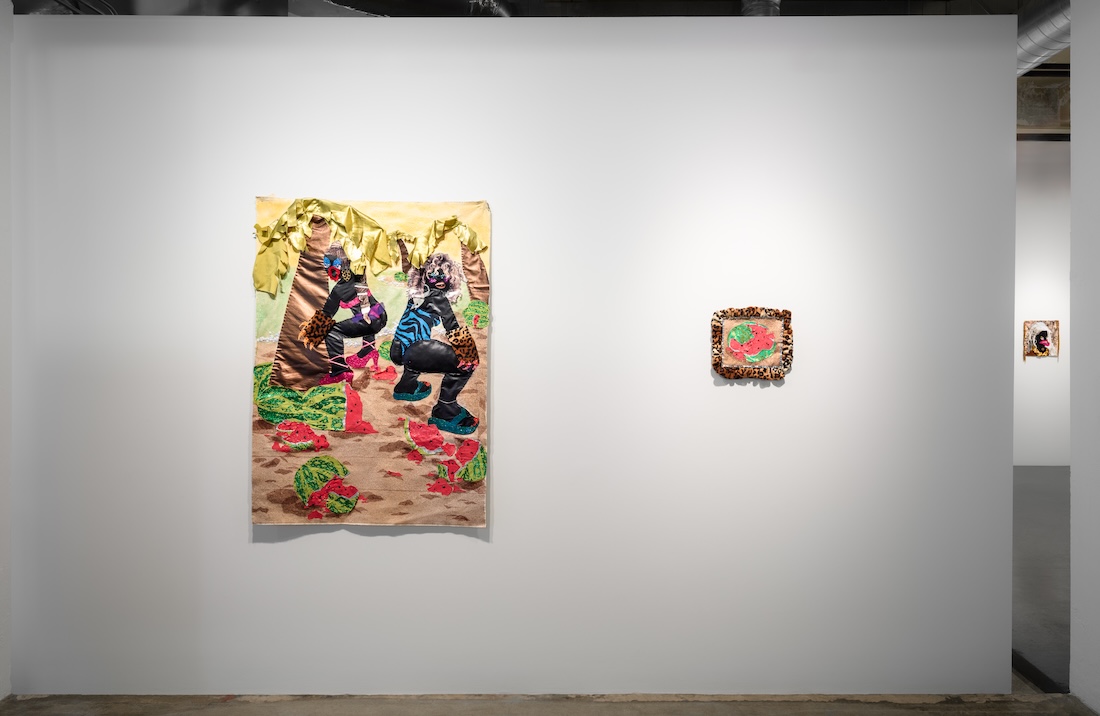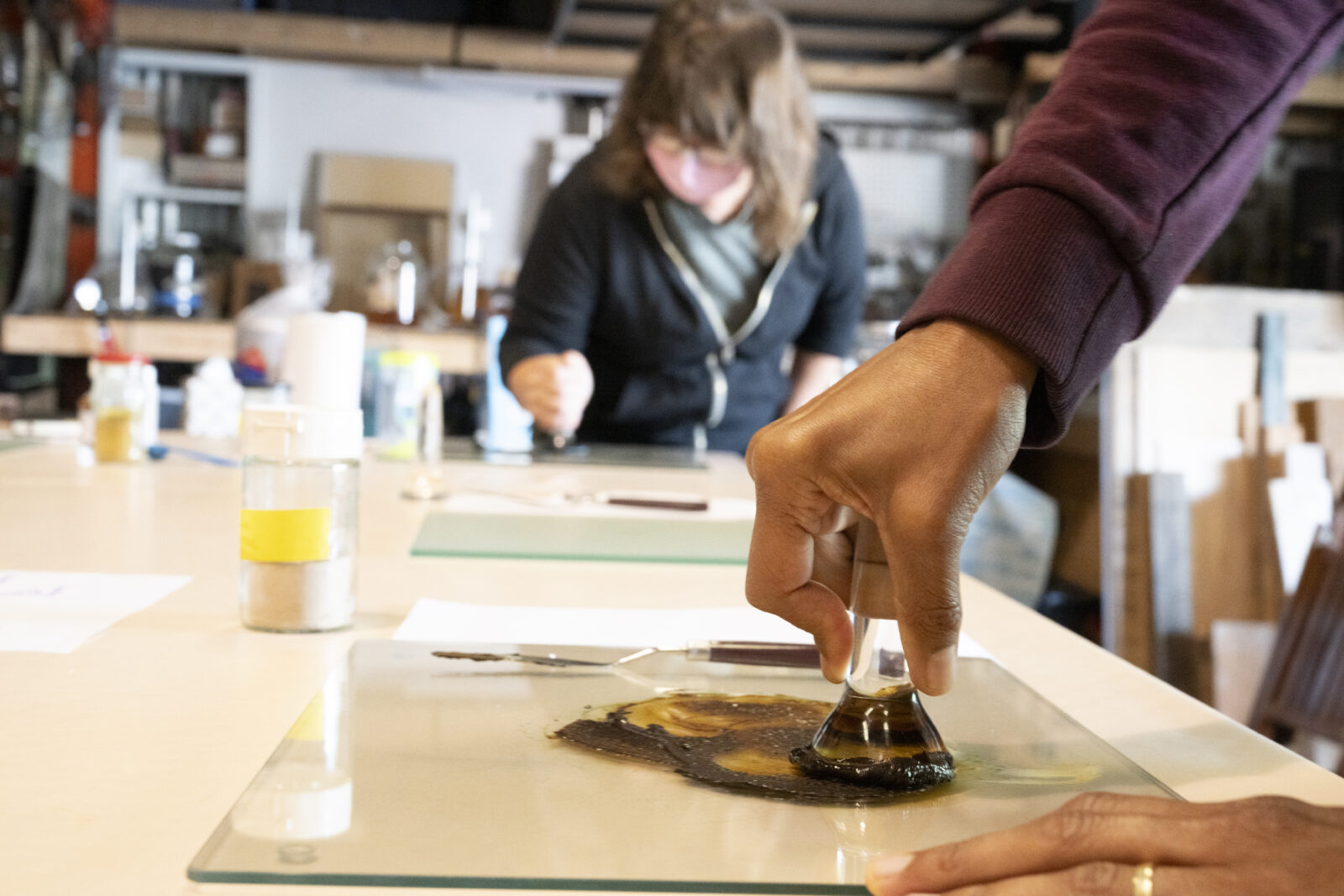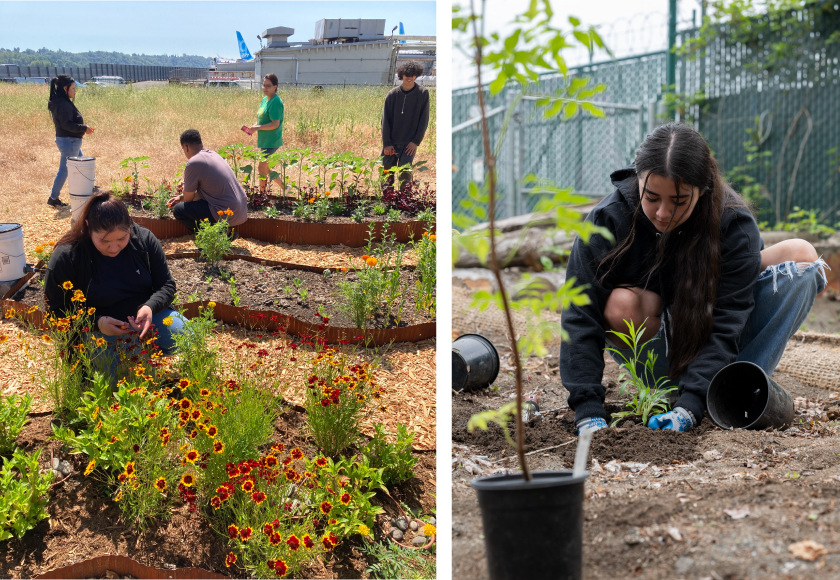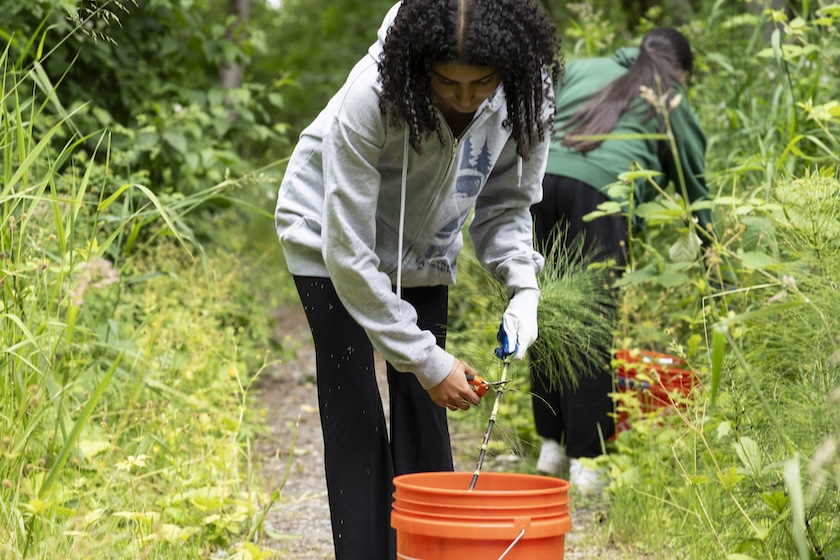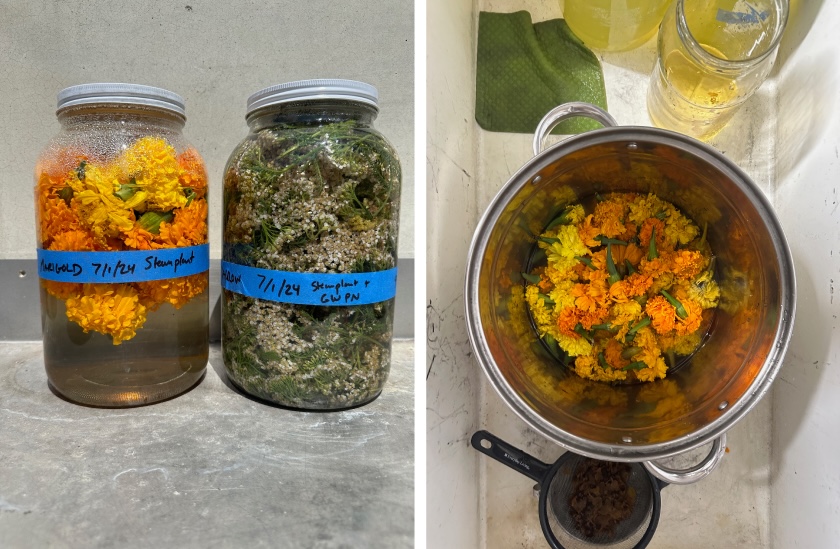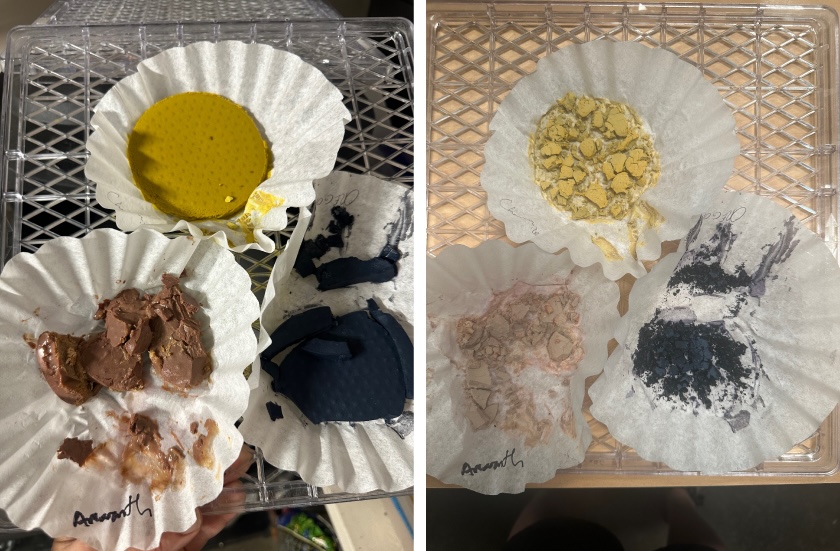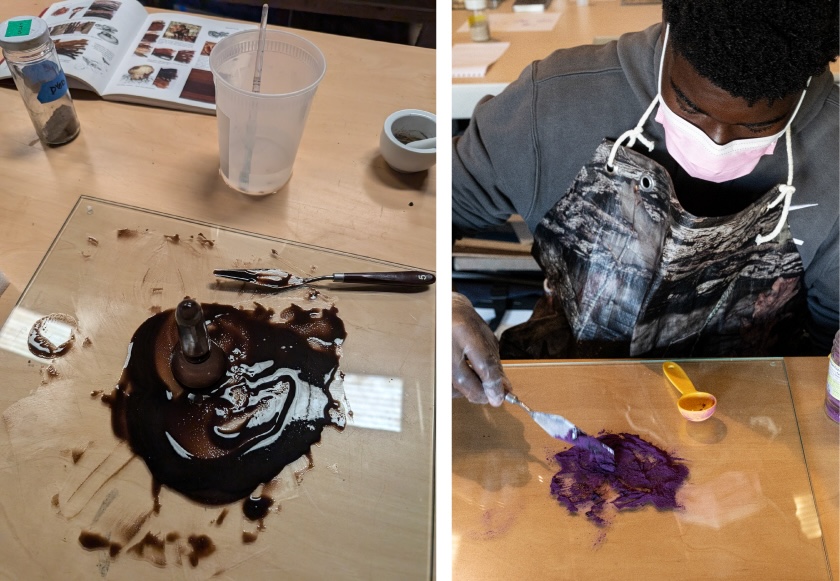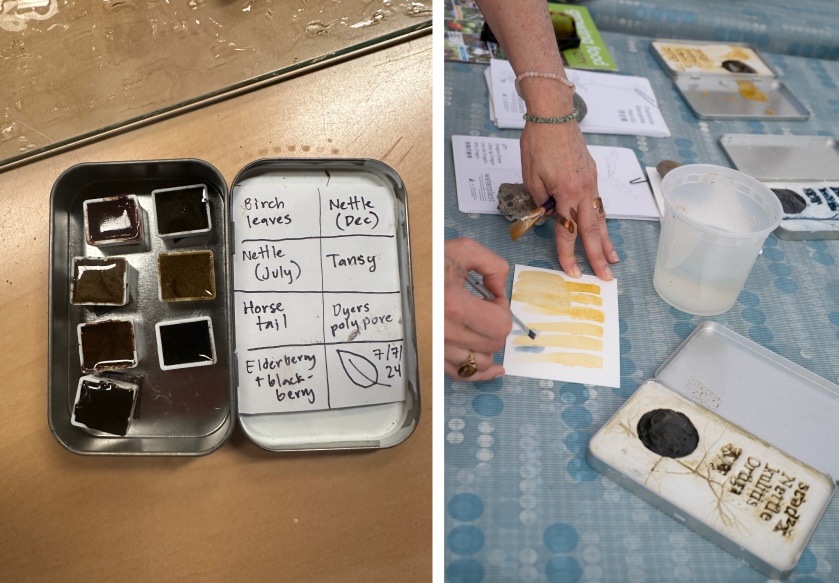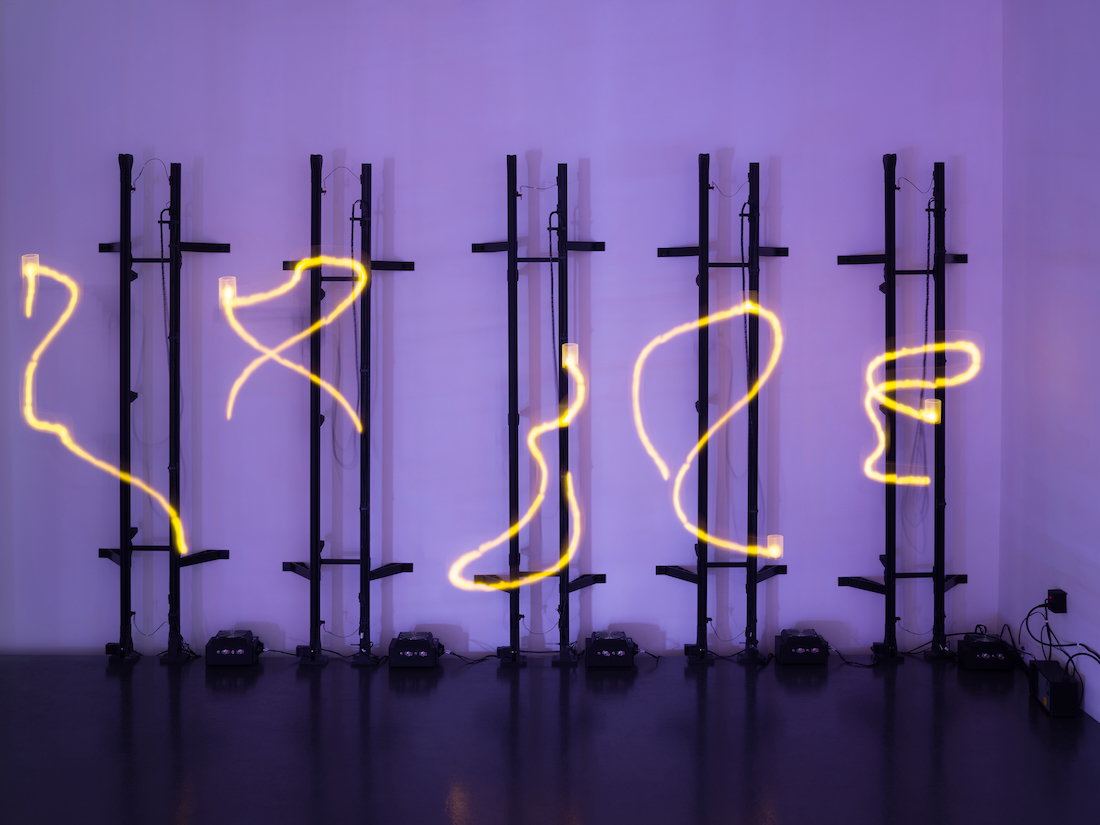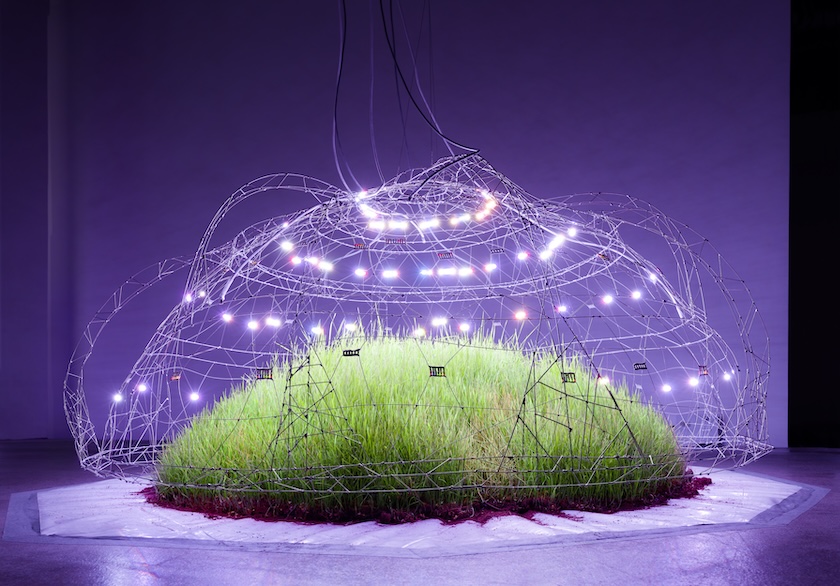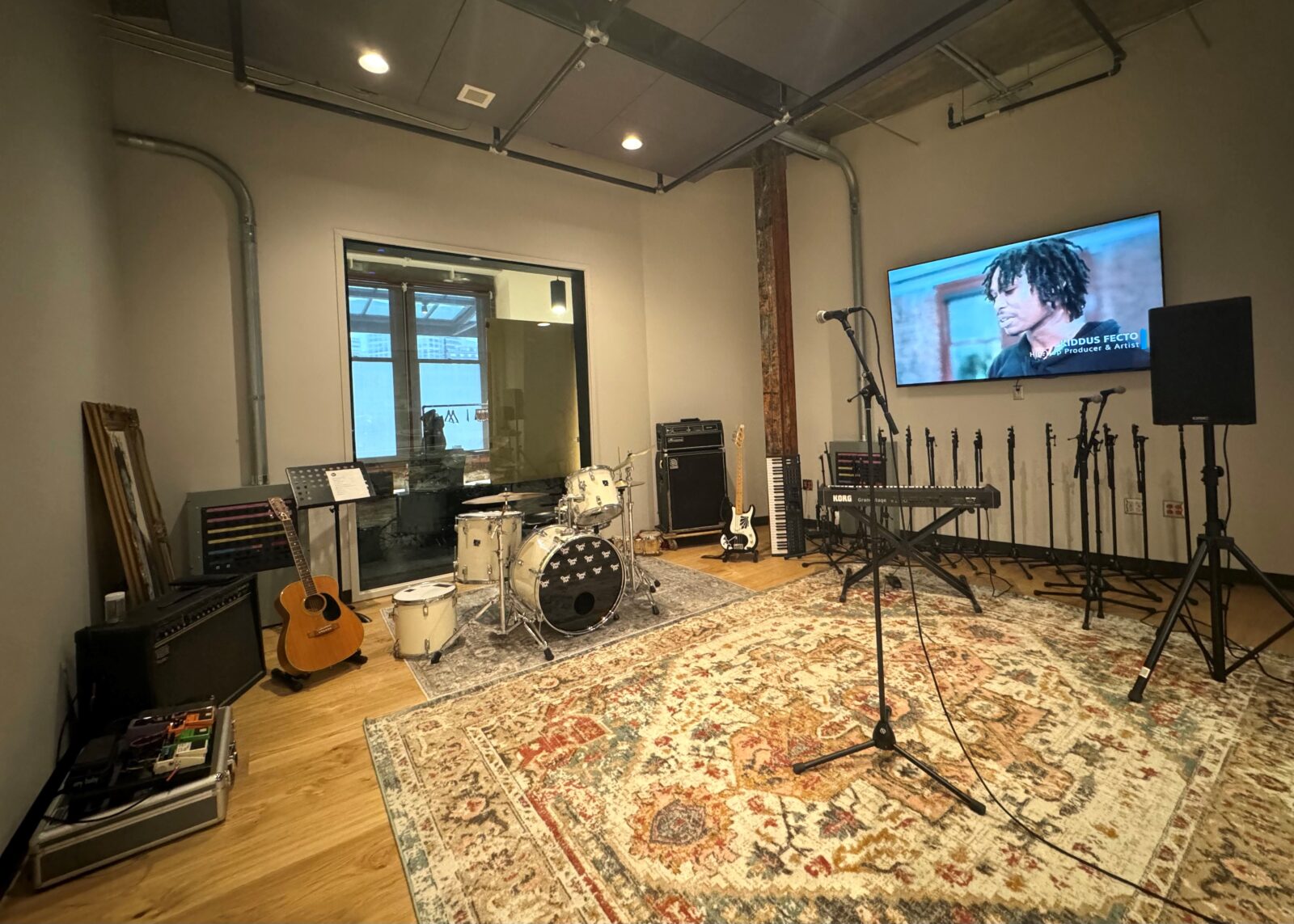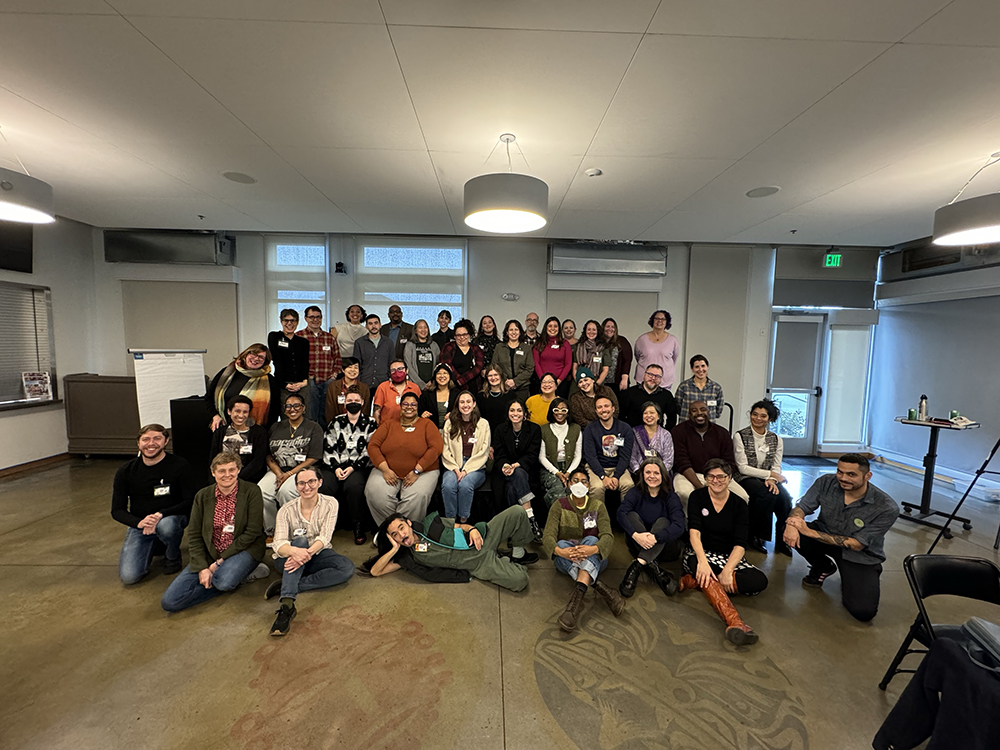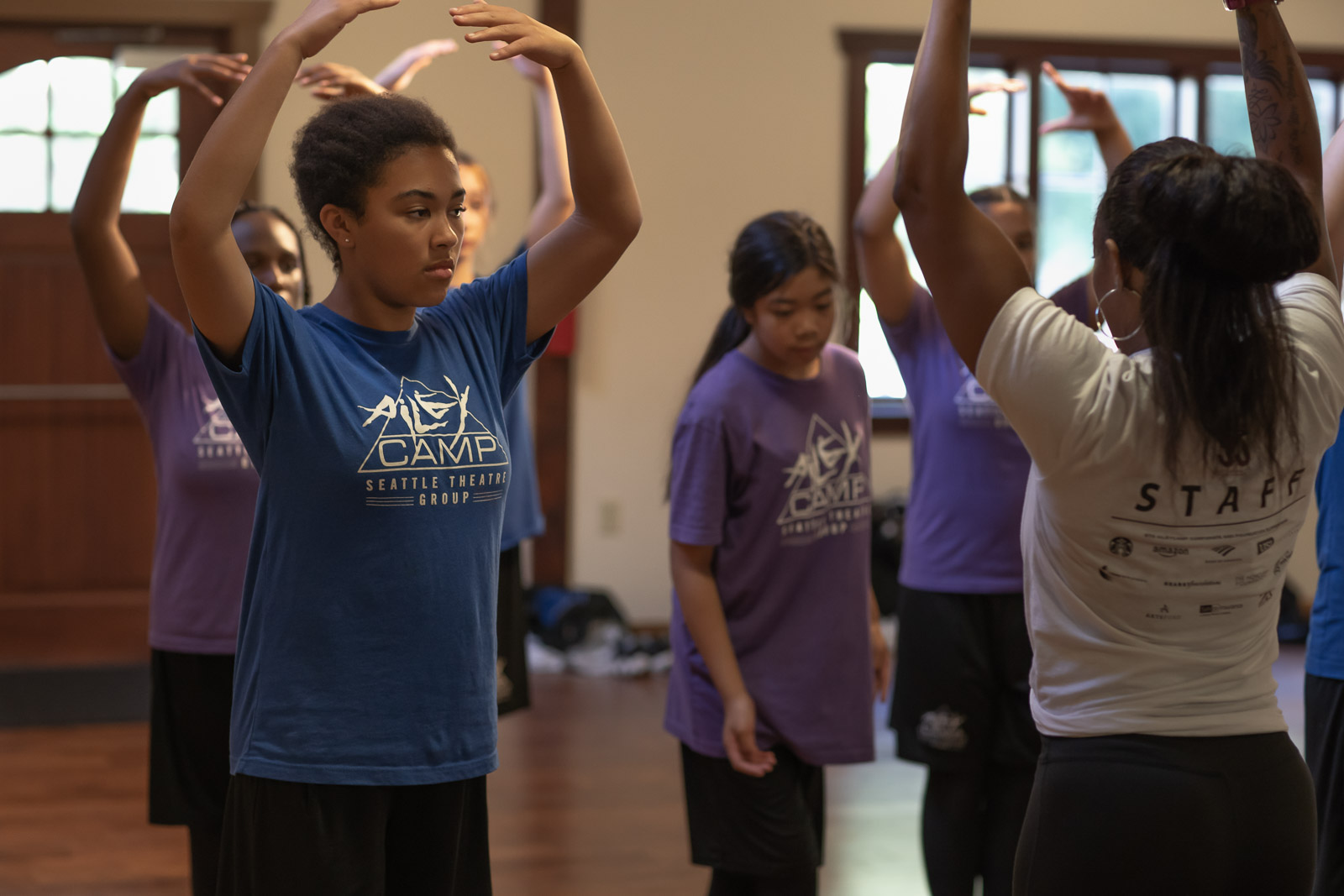Getting into nature—and art—at King County parks
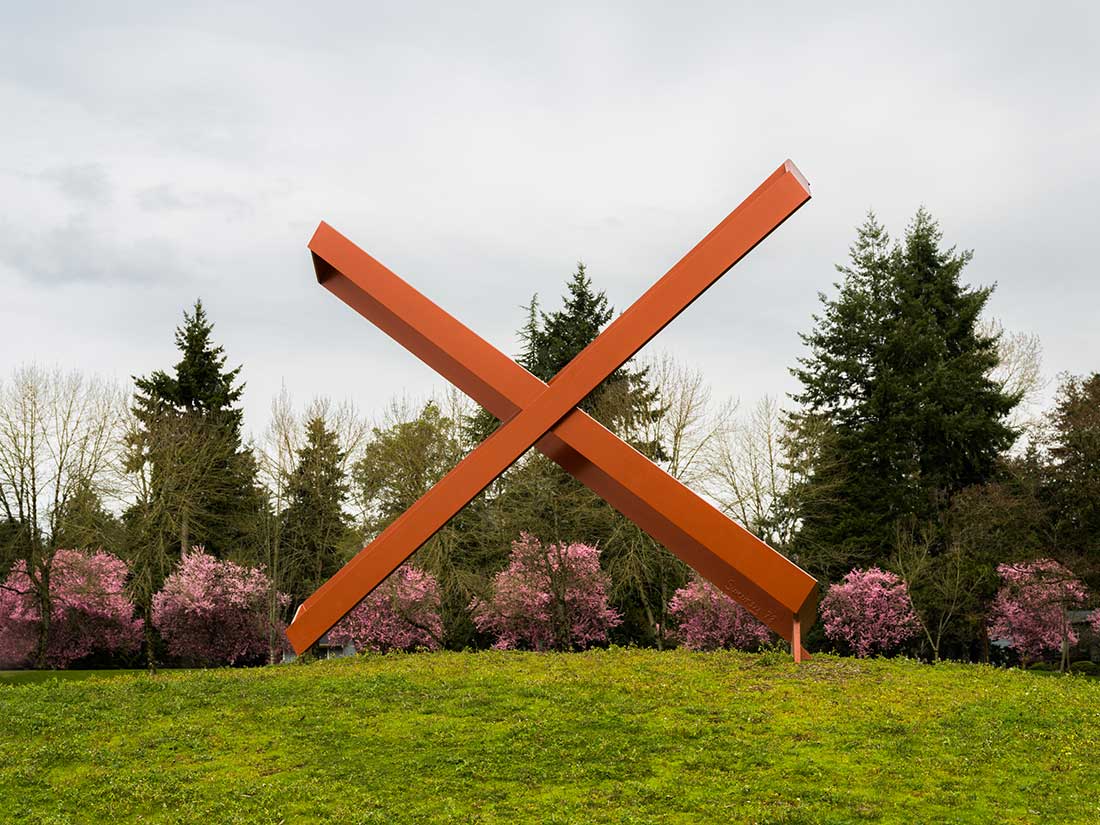
All the way back in 1978, the giant red metal X known as The Kiss was first installed at Ronald Bog Park in Shoreline, becoming a local landmark. The Kiss is among the oldest artworks made possible by 4Culture’s rich and enduring partnership with King County Parks, but it’s only one of many. All across the county, a wide and ever-growing collection of artworks contributes to the experiences people have when visiting the region’s parks—and, if you live here, you’re bound to be familiar with at least a few of them.
Continue Reading ›
All the way back in 1978, the giant red metal X known as The Kiss was first installed at Ronald Bog Park in Shoreline, becoming a local landmark. The Kiss is among the oldest artworks made possible by 4Culture’s rich and enduring partnership with King County Parks, but it’s only one of many. All across the county, a wide and ever-growing collection of artworks contributes to the experiences people have when visiting the region’s parks—and, if you live here, you’re bound to be familiar with at least a few of them.
If you’ve spent time in Des Moines’ Redondo Waterfront Park, for example, you surely know the eight-ton granite Redondo Arch perched on the coastline. If you bike the Burke-Gilman Trail, you know Ebb & Flow, the kaleidoscopic mural that lines the 230-foot Wayne Tunnel. And if you’ve wandered through Island Center Forest on Vashon Island, you may have come upon a series of animal silhouettes cut from steel.
Today King County owns and maintains 205 parks, 175 miles of regional trails, and 215 miles of backcountry trails—all of which add up to over 30,000 acres of land. 4Culture works with Parks to commission, install, and care for artworks in those spaces.
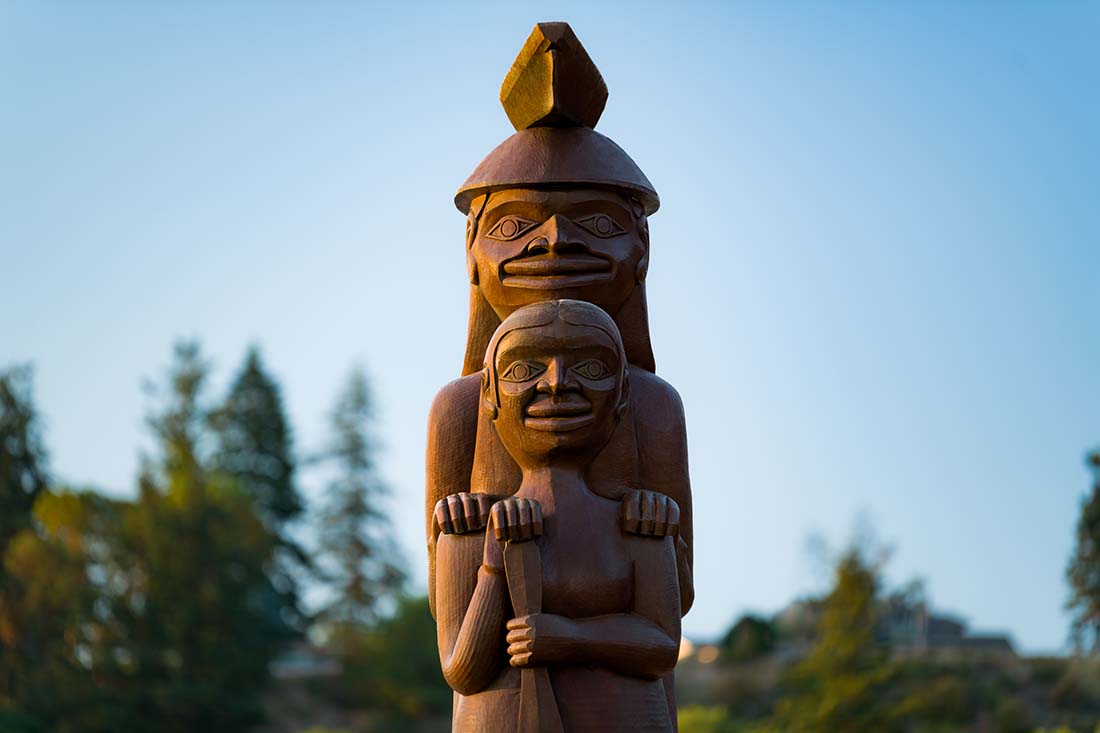
Many of the artworks in the county’s parks celebrate our region’s Indigenous peoples, like the Coast Salish-style bronze Welcoming Figure at Richmond Beach Saltwater Park in Shoreline or the Ts’msyan totem and Coast Salish house posts in Sammamish’s Beaver Lake Park. While many artworks are permanent, others are created as temporary experiences, though they may forever live large in your mind. For instance, The Long Walk, which for three summers led groups of community members on a 45-mile hike through the county trails system, and Picturing Trails, which consists of 36 photos that were taken along King County trails, then exhibited at Gallery 4Culture before becoming part of the county’s Portable Works Collection.
To unify the vision behind the artworks along the Regional Trails System (RTS), in 2014 Brian Borello devised Park’s first-ever Arts Plan, defining an aesthetic for the trails and an ethos for enhancing the way people experience them. For 10 years, it served as a guide for 4Culture, Parks, artists, and community members working together to create and steward RTS art and design effects.
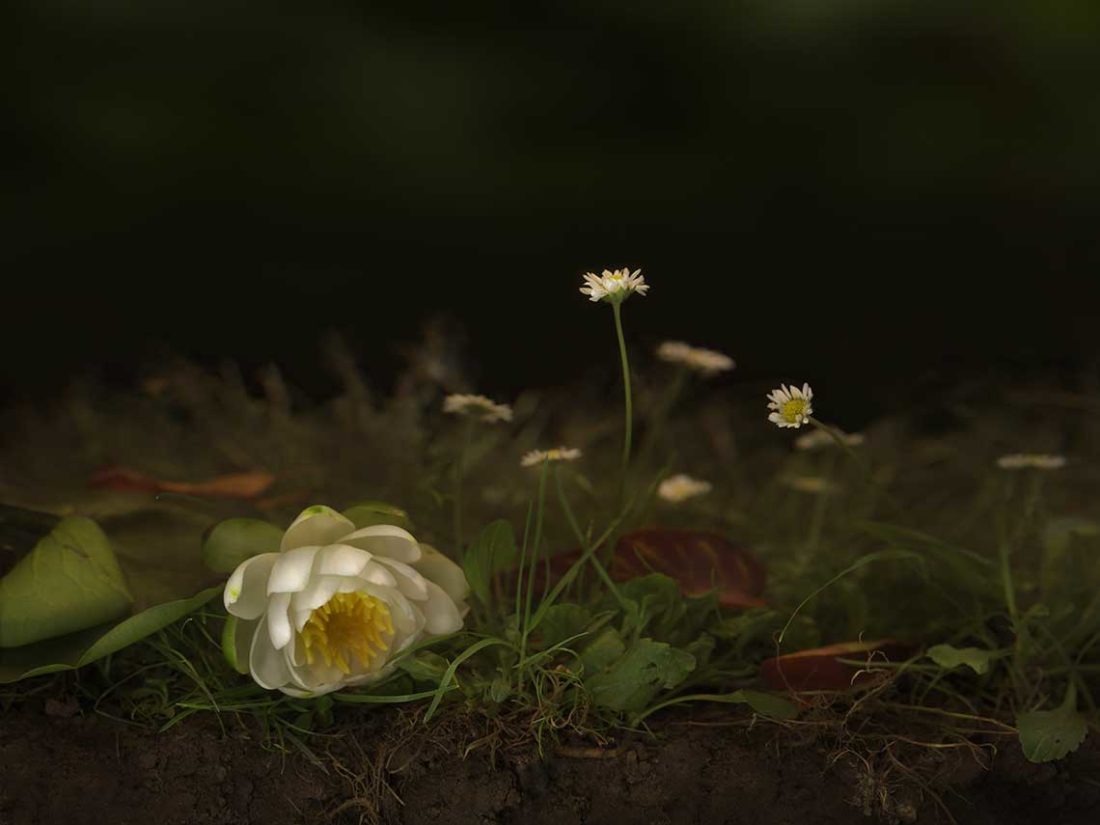
Among the places and projects Borello’s plan helped to shape is the Kit of Parts for the new Lake to Sound Trail, which will ultimately span 16 miles from the south end of Lake Washington in Renton to the Puget Sound shoreline in Des Moines. Created by Jenny Heishman and Kurt Keifer, the kit helps to unify the trail experience by outlining various sculptural elements intended to support social spaces, assist in wayfinding, provide information, and more. Its components include two types of concrete bases and a series of interchangeable timber forms and painted steel panels that can be combined in more than 60 different ways. As the trail takes shape, many of these elements are currently being installed. Look for them to appear on the SeaTac segment this summer!
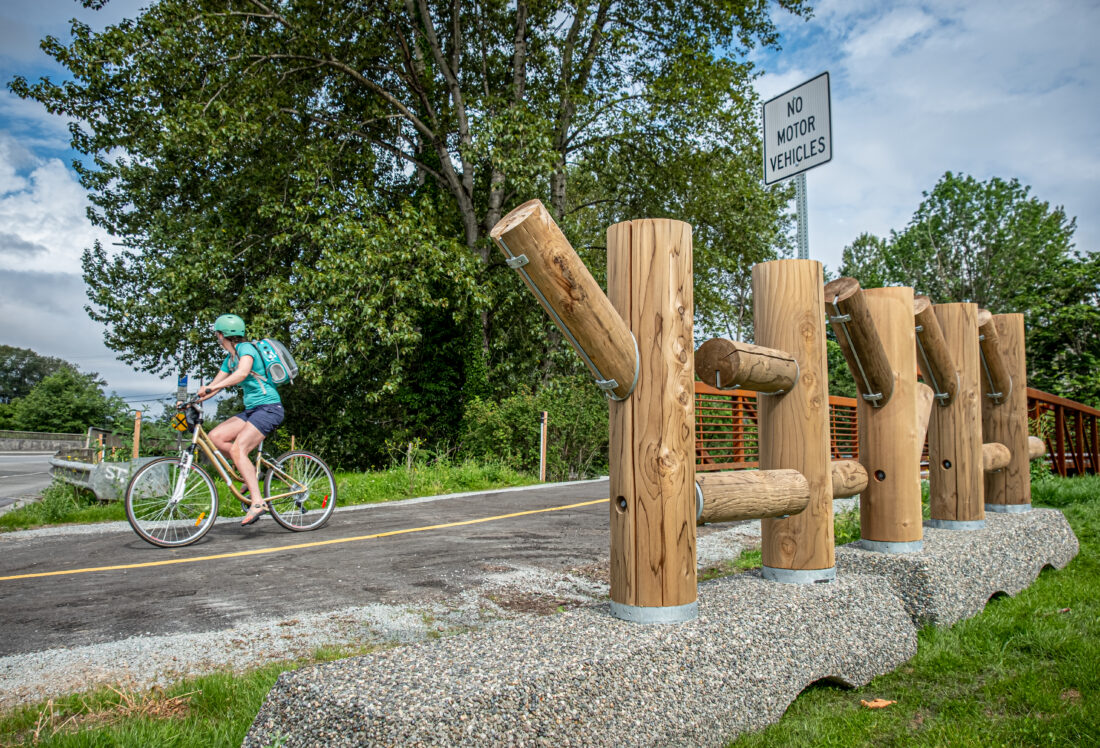
With Borello’s Art Plan reaching the end of its decade of intended use, 4Culture and Parks commissioned Rosten Woo to develop an Art Plan for the next 10 years. Completed in December 2024, Seeding considers both parks and trails, imagining ways that agencies can nurture artist and community relationships to the landscape over time. It offers five types of “seeds” that can originate new works: artist residencies, large and small site-specific works, time-based performances in unique locations, and community-focused art collaborations. Now Woo is developing an artwork rooted in the plan, which will eventually make its home in Lakeland North Urban Nature Park.
Woo’s forthcoming piece isn’t the only new Parks project in the works. The community can also look forward to the completion of a new permanent sculpture by W. Scott Trimble at the gateway to Eastrail in Woodinville. Like many of the artworks in King County parks, Trimble’s new work is inspired by the area’s history with trains, wine, and whiskey. Wooden slats recall barrels and railroad ties and its large geometric forms echo the shapes of a locomotive and train car. We can already picture a future in which the artwork serves as a meeting place, an architectural landmark, and a stopping point for those who use the trail or live and work in the neighborhood.
Explore parks and trails artworks here.
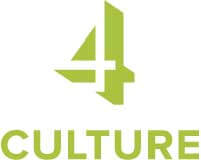
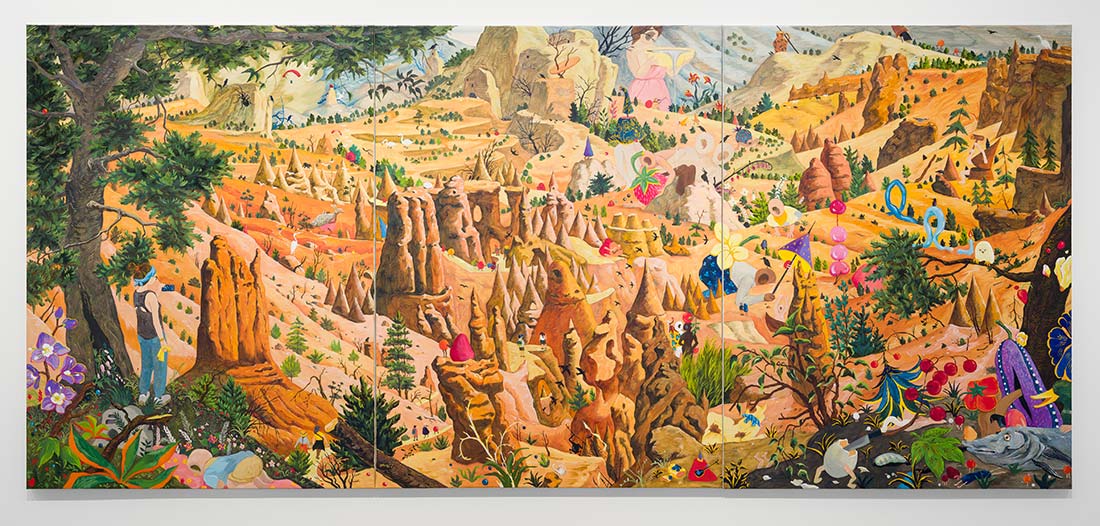
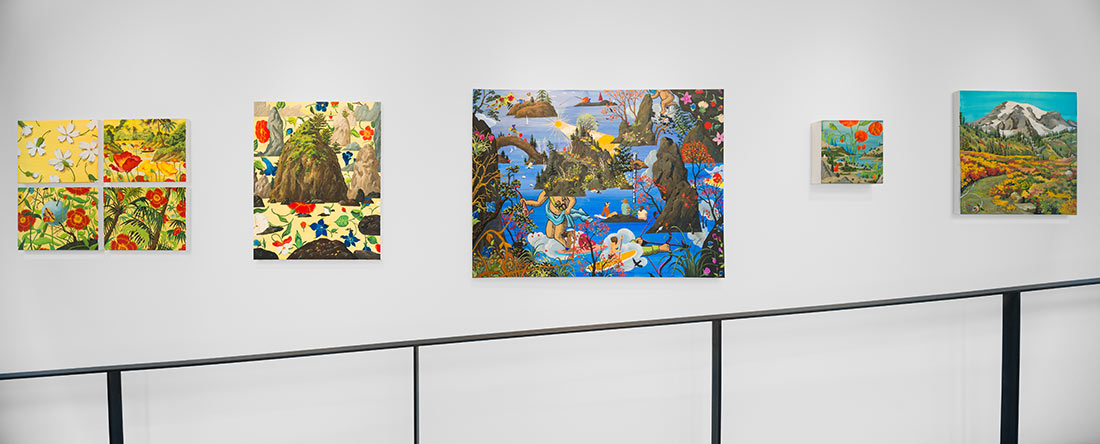
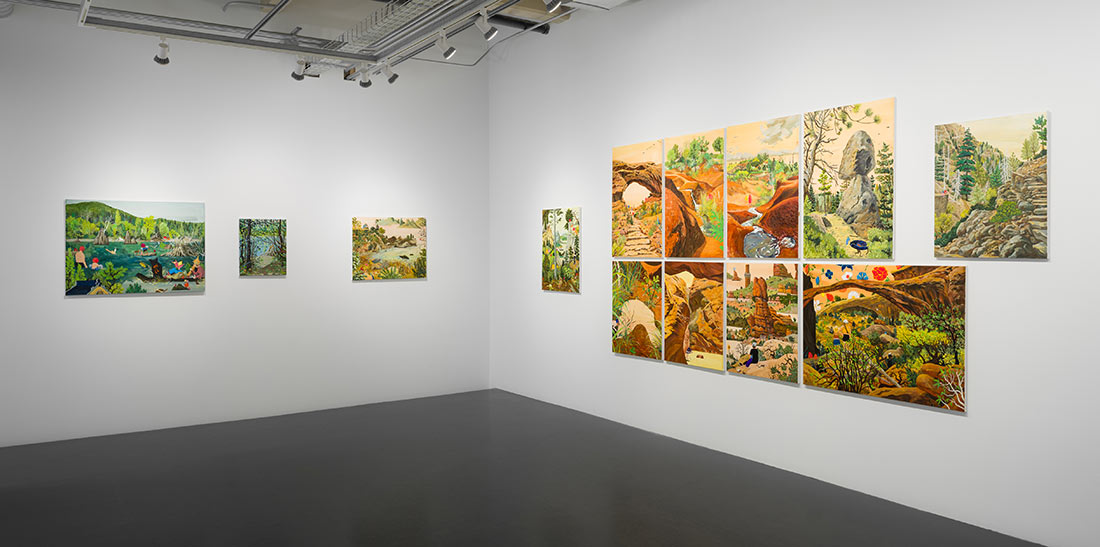
 Yet she acknowledges that some objects carry very different meaning in different places, like tents, for example. “I use a lot of cones or tent shapes because I like hiding something inside of it. The tent can be for lots of things,” Lim explains, noting the many ways she’s observed West Coast artists depicting teepees and tents historically.
Yet she acknowledges that some objects carry very different meaning in different places, like tents, for example. “I use a lot of cones or tent shapes because I like hiding something inside of it. The tent can be for lots of things,” Lim explains, noting the many ways she’s observed West Coast artists depicting teepees and tents historically.


